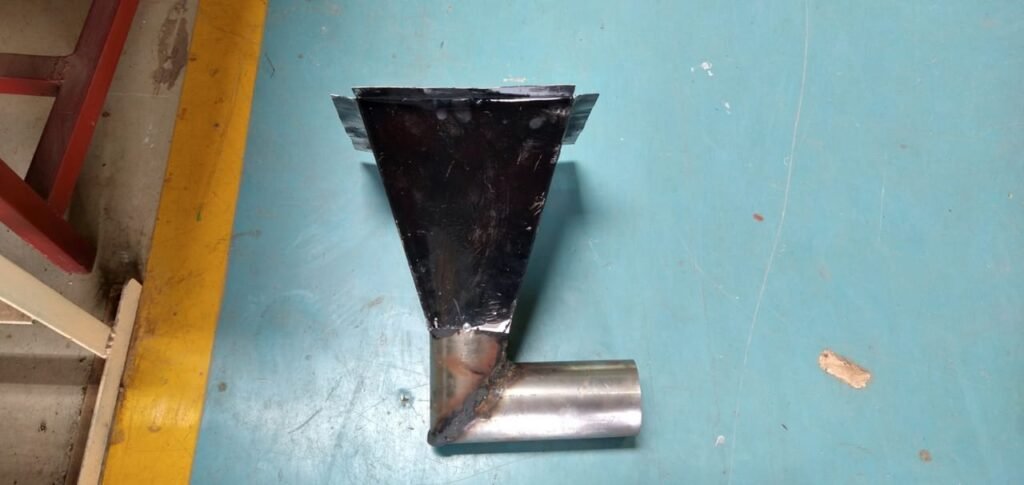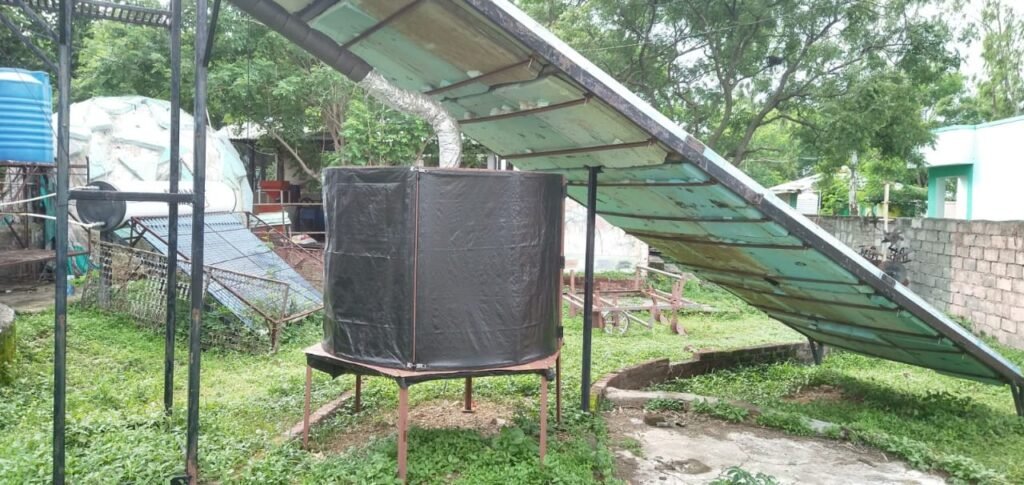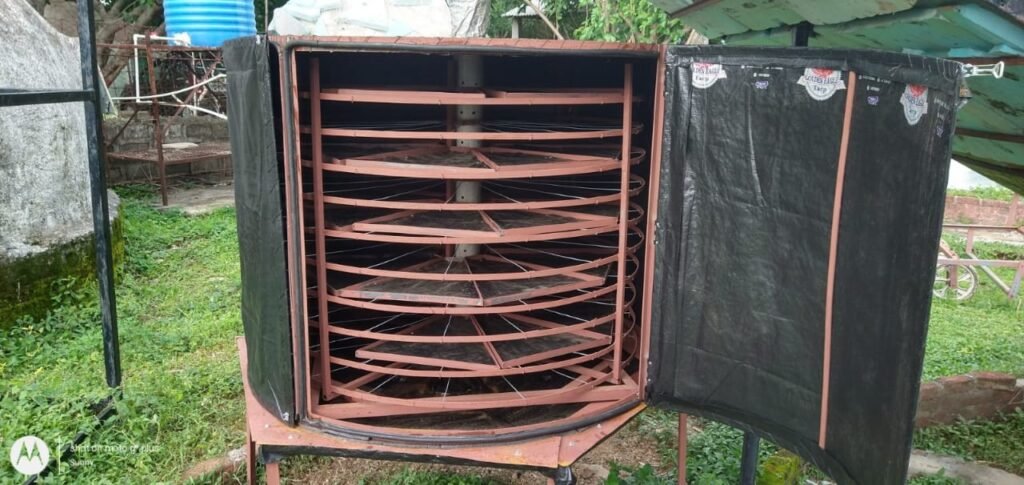Design:
Working of the drying chamber:
The drying chamber will be kept below the existing air tunnel of the convection dryer and will be connected to the air tunnel by a duct.
The drying chamber will have an exhaust fan which will throw the air inside the drying chamber out creating a low pressure region inside the chamber,
Due to the low pressure air from the air tunnel will get sucked into the drying chamber
This hot air will enter the drying chamber through one end of a centrally mounted pipe with holes on its periphery and the other end closed,
The layers of the tray structure will be seperated from one another to avoid mixing of air from two layers,
The air will come out of the central pipe and interact with the substrate placed on the trays causing moisture removal due to evaporation,
This air will then move towards the exhaust fan mounted at the bottom without interacting with the substrate of any other layer due to separation,
The air carrying moisture will be finally thrown out of the drying chamber leaving the substrate dry.
Design parameters of the drying chamber:
- Surface area of the trays: 10 m2
- Diameter of the chamber: 1.5 m
- Height of the chamber: 1.04 m
- Volume of the chamber: 1.84 m3
The Solidworks assembly of the drying chamber can be accessed by clicking the below link:
https://drive.google.com/file/d/1vZV_nl0jSFUnRQfr3bfOMeDf26CuAnyI/view?usp=sharing
Fabrication:
The drying chamber was fabricated in 3 parts. The tray structure, the outer casing, and a stand for the other two parts to rest upon.
The tray structure:
There are two rings in the tray structure connected via GI wire for the trays to rest. The rings are made up of flat plates, which were welded to a structure made up of square tubes.
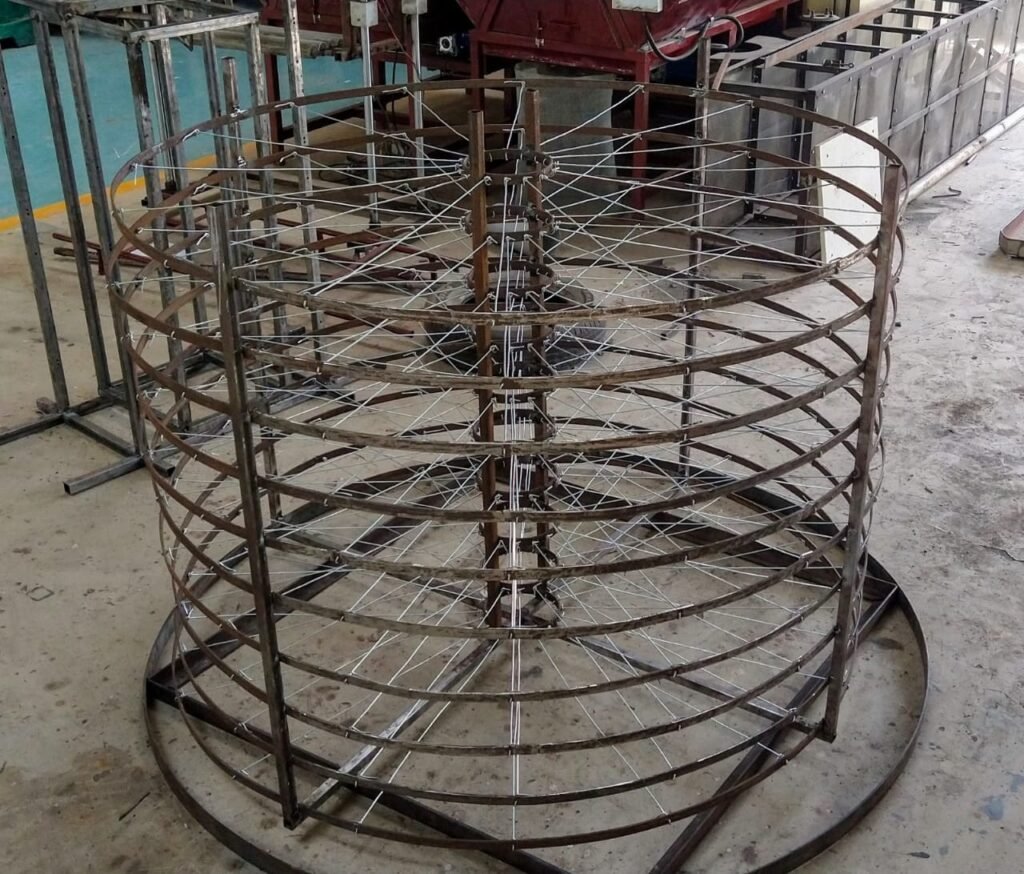
The outer casing:
The outer casing has its structre made up of L-angles, four swing open doors, two on each side were fabricated using flat plates. The casing along with doors was covered by a water proof black tarpouline paper.
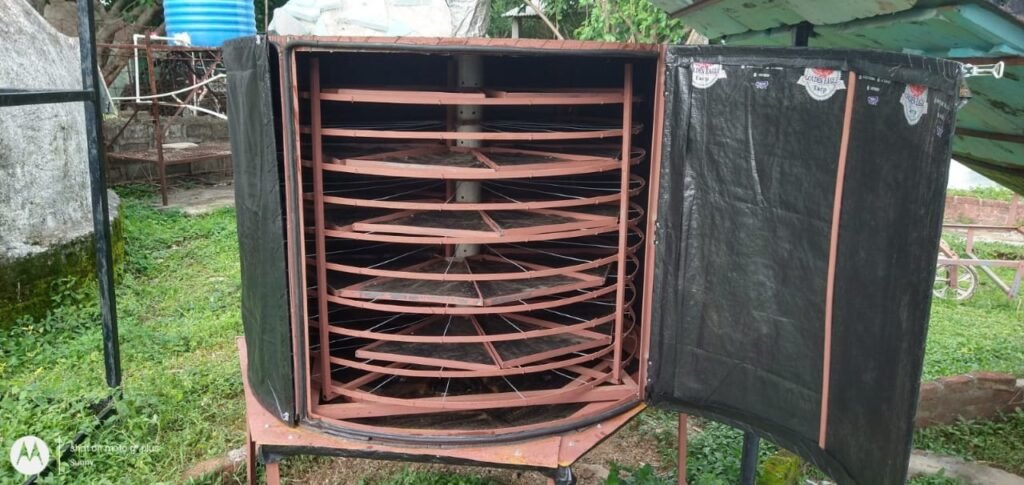
Stand with cone:
A hexagonal stand was fabricated for the other two components to rest upon. Conical shape was made using GI wire and was covered by tarpouline paper for the mounting of the exhaust fan.
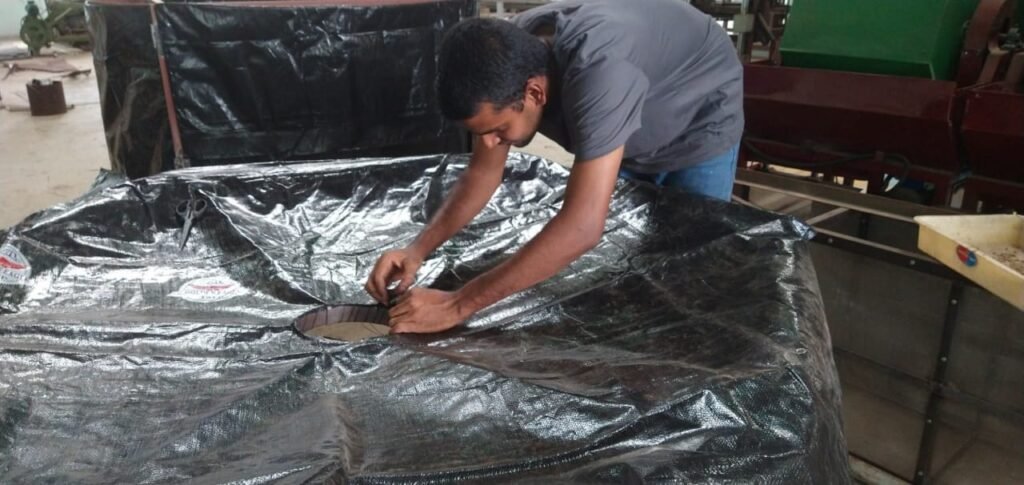
Ducting and Installation of the dryer:
A hopper shaped cone was fixed at the bottom of the upper end of the air tunnel to which a duct was connected.
